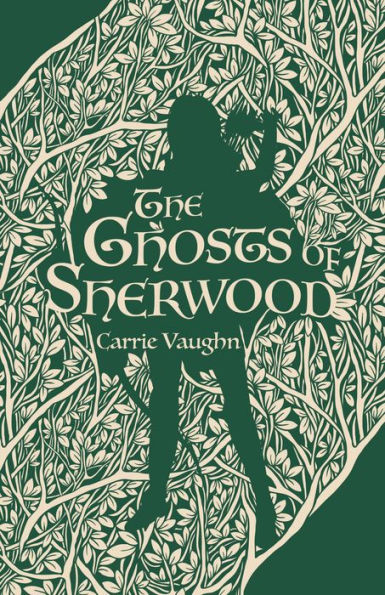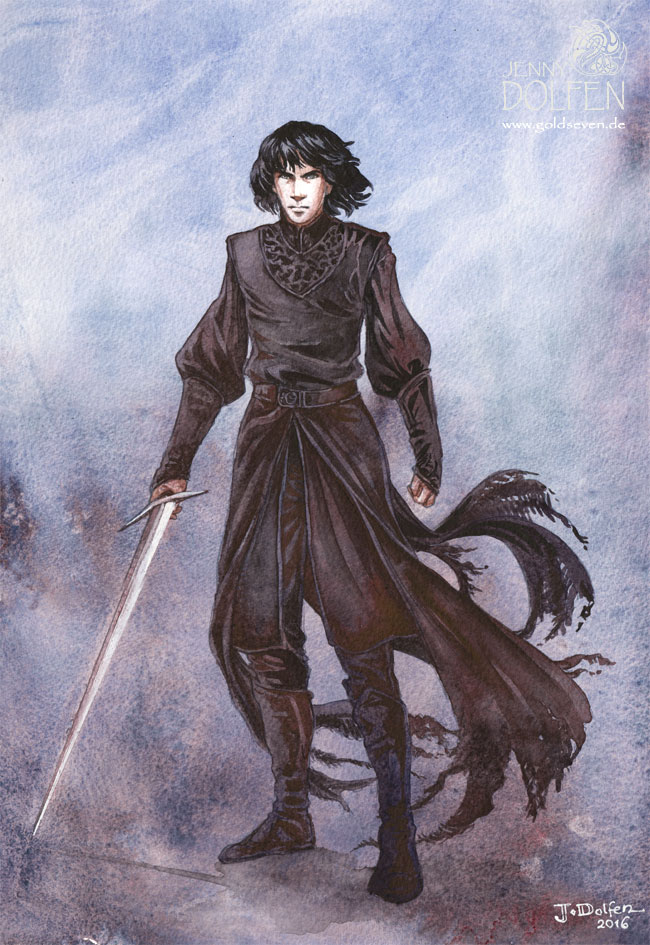In this biweekly series, we’re exploring the evolution of both major and minor figures in Tolkien’s legendarium, tracing the transformations of these characters through drafts and early manuscripts through to the finished work. This week’s installment is the second in a short series on that most infamous of Noldorin Elves: Fëanor, father of seven sons and creator of the Silmarils.
In the previous installment, we spent our time looking at the close relationships in Fëanor’s life and evaluating them in order to better understand his temperament and character. Already, we’ve seen Fëanor’s penchant for unnatural isolation, his pride, his possessiveness, and of course, his prodigious talent. His faults only increase as his skill grows.
I want to start this time by saying a bit more about Fëanor himself, particularly his name and the circumstances of his birth. We must recognize first of all that he is named by his mother, Míriel, who specifically chooses the name “spirit of fire” for her firstborn and only son. Among the Elves, mother-names are particularly important because they are often, perhaps even always, prophetic or at the very least insightful. Melkor is often associated with fire, described as a spirit of fire, and is first driven to rebel because he goes out searching for Ilúvatar’s Imperishable Flame. The connection implied by Fëanor’s name is thus a significant one, suggesting that we ought to be aware of the characteristics the two might share.
Let’s explore this idea. I’ve mentioned in various pieces before now that the choice facing Fëanor is one of influence. Who will he follow, Melkor or Aulë? Both are skilled craftsman who are drawn to light, life, and beauty; both had an impatient desire to bring life into existence before the time Ilúvatar had set; and both were fascinated by Fëanor. Not only that: Melkor and Aulë were particular enemies because (as I explored in detail in the installment on Aulë) they were so much alike. The published Silmarillion explains it thus:
Both […] desired to make things of their own that should be new and unthought of by others, and delighted in the praise of their skill. But Aulë remained faithful to Eru and submitted all that he did to his will; and he did not envy the works of others, but sought and gave counsel. Whereas Melkor spent his spirit in envy and hate, until at last he could make nothing save in mockery of the thought of others, and all their works he destroyed if he could. (15)
This is the basic pattern that Tolkien sets up with the opposition of these two Valar: on the one hand is faithfulness, humility, obedience, and generosity; on the other, envy, hate, mockery, greed, and destruction. Because the Valar often serve as avatars of a sort (for example: Yavanna stands for fertility and livelihood; Mandos for fate and judgment; Ulmo for wild and solitary inscrutability; etc.), we should pay particular attention to the fact that Melkor and Aulë are both avatars for the craftsman or artist. However, as archetypes, they both represent very different kinds of artistry. Melkor’s is selfish and destructive, and harms more than it enriches. Aulë’s is open and kindly, adding beauty to beauty and grace to grace. His artistry doesn’t hoard or imprison, but rather seeks to invite creative participation.
Buy the Book


The Ghosts of Sherwood
Since Tolkien gives us these two artists as archetypes, it’s reasonable to assume that every artist who comes after them might fall, more or less, into one of these two patterns. People like Nerdanel and (to some extent) Míriel and Gimli take up Aulë’s pattern. People like Sauron and Saruman take up Melkor’s.
Fëanor clearly has the opportunity to go down either path. As I mentioned before, he’s willing, for a while, to take Nerdanel’s advice and to accept her guidance in craftmanship. Slowly, though, he begins to follow the path laid down by Melkor even as his hate for the Enemy grows. We’ve seen this already in his relationships, but I want to briefly return to that idea to make a point.
In a late manuscript published in Unfinished Tales, Tolkien wrote that Fëanor and Galadriel had a strained relationship from the beginning, and that, oddly enough, according to some it was talk of Galadriel’s hair that “first gave to Fëanor the thought of imprisoning and blending the light of the Trees that later took shape in his hands as the Silmarils” (221). According to the story (one I recounted in the second of two articles on Galadriel), Fëanor asks “three times for a tress [of Galadriel’s hair], but Galadriel would not give him even one hair” (221). Part of Fëanor’s issue is that he insists on taking and giving nothing in return; he looks at the world and the people around him and sees them as little more than his instruments in his quest to become great, to create what can never be imitated.
Tolkien clearly saw that this encounter between the two greatest of the Noldor set a precedent that Fëanor never overcame. The making of the Silmarils is the fulfillment of that promise. Soon after crafting the jewels he “began to begrudge the sight of them to all save to his sire and to his seven sons” (Morgoth’s Ring, hereafter MR, 96). It’s important to note, however, that the Silmarils themselves weren’t evil or debased. In fact, before Fëanor’s possessiveness really sets in, the Silmarils indicate a generosity after the pattern of Aulë rather than Morgoth, for they “of their own radiance shone like the stars of Varda; and yet, as were they indeed living things, they rejoiced in light and received it, and gave it back in hues more lovely than before” (MR 94-95).
In other words, the Silmarils enrich their surroundings much like the sculptures of Nerdanel or the tapestries of Míriel. They give back gifts greater than those that they take in. The problem is, of course, Fëanor’s handling of them: he “began to love the Silmarils with a greedy love. […] Seldom he remembered now that the light with which they were lit was not his own” (MR 276). This passage is perhaps the most telling of all that we’re given concerning Fëanor. That simple, final sentence reveals his great flaw: he refuses to acknowledge his indebtedness to everything around him: the world that made his creation possible; the fact that his talent that came from Ilúvatar and from the careful guidance of those more skilled than he; and that all true artistry is meant to be shared as a gift (remember Niggle?), rather than hoarded and locked away.
Fëanor’s creation becomes destructive insofar as he refuses to acknowledge that his creativity has an origin point outside himself. When he begins to imagine that the Light is his—that is when he falls.
It was Melkor’s failure, too. In the Ainulindalë, Ilúvatar rebukes Melkor for presuming to create something apart from the Ilúvatar’s power: “thou, Melkor,” he says, “shalt see that no theme may be played that hath not its uttermost source in me” (4). And yet Melkor continues to act as if that were not true. So his creations are mockeries.
In the moment that Fëanor forgets that he is not the Source, he takes up the pattern of Melkor and leaves Aulë’s path behind. In case we didn’t get the message, Tolkien subtly reminds us when the Valar ask Fëanor for the Silmarils in order to restore the Two Trees. When the other Valar would press the Noldo for an answer, Aulë steps in and asks them to be patient, telling them they don’t truly understand what a great thing they ask. Clearly, Aulë sees in this moment the very test that was set before him when Ilúvatar confronted him over the creation of the Dwarves, and he knows just how hard it is for Fëanor to let go. And Fëanor’s response could have easily been that of Aulë:
Fëanor spoke then, and cried bitterly: “Verily for the less even as for the greater there is some deed that he may accomplish but once only. And in that deed his heart shall rest. Mayhap I can unlock my jewels, but never again shall I make their like; and if they be broken, then broken will be my heart, and I shall die [later: “be slain”]: first of all the Children of Eru.” (MR 107)
Of course, Aulë didn’t respond that way; he was penitent, and his creations were saved and brought to Life by Ilúvatar. And so in choosing the other path, Fëanor is choosing Melkor over Aulë—the Melkor who once claimed Arda for his own, though many hands had gone into its making (Silmarillion 9).
Fëanor only continues to grow into Melkor’s pattern, and he reveals himself in both speech and actions. Fëanor rouses the Noldor to rebellion against the Valar and we read that: “Fierce and fell were his words, and filled with anger and pride; and they moved the people to madness like the fumes of hot wine. His wrath and his hate were most given to Morgoth, and yet well nigh all that he said came from the very lies of Morgoth himself” (MR 111). And again, in the abandoned poem “The Flight of the Noldoli from Valinor,” Tolkien writes that
There Fëanor mourned his jewels divine,
the Silmarils he made. Like wine
his wild and potent words them fill;
a great host harkens deathly still.
But all he said both wild and wise,
half truth and half the fruit of lies
that Morgoth sowed in Valinor. (The Lays of Beleriand, LB, 253)
In other words, Fëanor is so far gone down his dark path that he doesn’t even recognize that he’s spouting the lies of Melkor in his grief and anger. He won’t ever truly realize it, even when, with his dying breath, he commands his sons to continue to hoard the jewels and to keep their Light from being shared in the darkness of Middle-earth.
There are many other details we might painstakingly pick out from Fëanor’s story in order to draw more connections between Melkor and the Noldo. But I think we’ll leave this idea here to steep until next time, when we take up the narrative once more and look at Fëanor’s Oath and the Flight of the Noldor.
The important thing to understand is that Tolkien has carefully and subtly emphasized the extent to which Fëanor has been duped by Melkor’s way of living even as he loudly decries Melkor as a tyrant and a villain. Tolkien hasn’t let us off easy here: Fëanor’s story is meant to be uncomfortable. It insists that even those who are most vocal and virulent in their opposition to evil might very well be so engrained in its seductions that they can’t even see how their own actions buy into its lies. Be careful, Fëanor’s story warns—it’s all too easy to hide your faults under the trappings of moral fervor.
Megan N. Fontenot is a Tolkien scholar and fan who’s happy to have a way to share Tolkien with fellow fans even when the world seems to be falling to pieces. Catch her on Twitter @MeganNFontenot1 and feel free to request a favorite character while you’re there!










